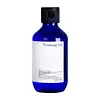What's inside
What's inside
 Key Ingredients
Key Ingredients

No key ingredients
 Benefits
Benefits

 Concerns
Concerns

No concerns
 Ingredients Side-by-side
Ingredients Side-by-side

Water
Skin ConditioningGlycerin
HumectantPropylene Glycol
Humectant1,2-Hexanediol
Skin ConditioningPEG-60 Hydrogenated Castor Oil
EmulsifyingCarbomer
Emulsion StabilisingArginine
MaskingHydroxyethylcellulose
Emulsion StabilisingEthylhexylglycerin
Skin ConditioningParfum
MaskingDisodium EDTA
Pentylene Glycol
Skin ConditioningXanthan Gum
EmulsifyingButylene Glycol
HumectantSodium Hyaluronate
HumectantSodium Hyaluronate Crosspolymer
HumectantPolyglyceryl-10 Laurate
Skin ConditioningHydrolyzed Collagen
EmollientHydrolyzed Hyaluronic Acid
HumectantHyaluronic Acid
HumectantCaprylyl Glycol
EmollientHydrolyzed Sodium Hyaluronate
Skin ConditioningPalmitoyl Pentapeptide-4
Skin ConditioningPalmitoyl Tripeptide-1
Skin ConditioningTripeptide-1
Skin ConditioningHexapeptide-9
Skin ConditioningHexapeptide-11
Skin ConditioningCopper Tripeptide-1
Skin ConditioningWater, Glycerin, Propylene Glycol, 1,2-Hexanediol, PEG-60 Hydrogenated Castor Oil, Carbomer, Arginine, Hydroxyethylcellulose, Ethylhexylglycerin, Parfum, Disodium EDTA, Pentylene Glycol, Xanthan Gum, Butylene Glycol, Sodium Hyaluronate, Sodium Hyaluronate Crosspolymer, Polyglyceryl-10 Laurate, Hydrolyzed Collagen, Hydrolyzed Hyaluronic Acid, Hyaluronic Acid, Caprylyl Glycol, Hydrolyzed Sodium Hyaluronate, Palmitoyl Pentapeptide-4, Palmitoyl Tripeptide-1, Tripeptide-1, Hexapeptide-9, Hexapeptide-11, Copper Tripeptide-1
 Reviews
Reviews

Ingredients Explained
These ingredients are found in both products.
Ingredients higher up in an ingredient list are typically present in a larger amount.
1,2-Hexanediol is a synthetic liquid and another multi-functional powerhouse.
It is a:
- Humectant, drawing moisture into the skin
- Emollient, helping to soften skin
- Solvent, dispersing and stabilizing formulas
- Preservative booster, enhancing the antimicrobial activity of other preservatives
Arginine is an amino acid that is important for human development. Your body uses is it to produce hair keratin and skin collagen.
As a cosmetic ingredient, Arginine has antioxidant properties and can also help repair damaged skin. This ingredient is derived either synthetically or from animals.
Arginine isn't fungal acne safe when used in the presence of other lipids (fats, fatty acids, oils, esters, etc). Oils and fats occur naturally within the skin, so take caution when using Arginine if you're prone to fungal acne.
Learn more about ArginineButylene Glycol (or BG) is used within cosmetic products for a few different reasons:
Overall, Butylene Glycol is a safe and well-rounded ingredient that works well with other ingredients.
Though this ingredient works well with most skin types, some people with sensitive skin may experience a reaction such as allergic rashes, closed comedones, or itchiness.
Learn more about Butylene GlycolCarbomer is a polymer of acrylic acid. Its main role is to create a gel consistency.
A high amount of carbomer can cause pilling or balling up of products. Don't worry, most products contain 1% or less of carbomer.
Hydroxyethylcellulose is used to improve the texture of products. It is created from a chemical reaction involving ethylene oxide and alkali-cellulose. Cellulose is a sugar found in plant cell walls and help give plants structure.
This ingredient helps stabilize products by preventing ingredients from separating. It can also help thicken the texture of a product.
This ingredient can also be found in pill medicines to help our bodies digest other ingredients.
Learn more about Hydroxyethylcellulose